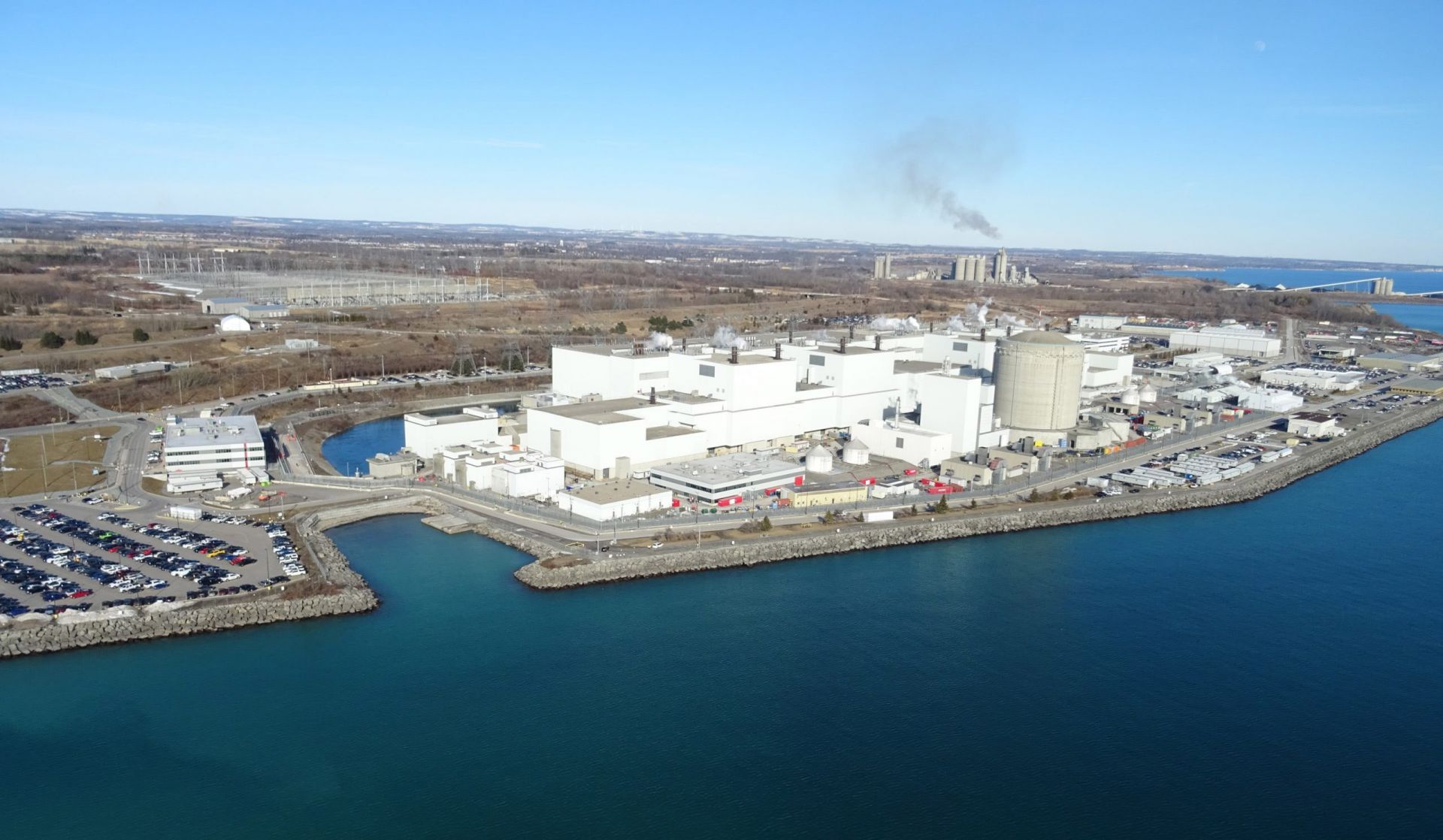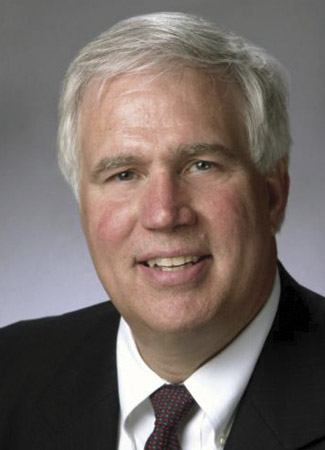U.S., Philippines ink civil nuclear pact

The United States and the Philippines last week signed a civil nuclear cooperation agreement—known in policy wonk jargon as a 123 Agreement.

A message from Electrical Builders, Ind.
America’s Top Performing Nuclear Plants Rely on Electrical Builders, Industries to Expand and Extend the Life of Their Critical Electrical Assets

The United States and the Philippines last week signed a civil nuclear cooperation agreement—known in policy wonk jargon as a 123 Agreement.

As countries increasingly plan to adopt or expand nuclear energy to their energy grids, the importance of national and international nuclear law was underscored in recent remarks by Rafael Mariano Grossi, the International Atomic Energy Agency’s director general.
BWX Technologies subsidiary BWXT Medical has agreed to provide Fusion Pharmaceuticals with generators to produce actinium-225, a medical isotope used to treat cancer in clinical trials.

The Department of Energy’s Office of Environmental Management is responsible for roughly 90 million gallons of radioactive liquid waste at Idaho National Laboratory, the Hanford Site in Washington state, and the Savannah River Site in South Carolina. About 900,000 gallons of waste are stored at INL, 56 million gallons at Hanford, and roughly 36 million at SRS. A further 400,000 gallons of waste from various operations are being stored at the Oak Ridge Site in Tennessee.
The United States will spearhead a pledge at the upcoming COP28 summit in Dubai to triple the world’s nuclear power capacity by 2050, according to a November 15 Bloomberg exclusive.

In October, staff at Kairos Power’s testing and manufacturing facility in Albuquerque, N. M., began transferring 14 tons of molten fluoride salt coolant into an Engineering Test Unit (ETU)—the largest transfer of FLiBe (a mixture of lithium fluoride and beryllium fluoride) since the Molten Salt Reactor Experiment in 1969.

Ultra Safe Nuclear has signed a cooperative agreement with the Manila Electric Company (Meralco)—the Philippines’ largest electric distribution utility—to study the potential deployment of one or more of the company’s high-temperature, gas-cooled microreactors in the Philippines. The agreement, signed November 15, builds on a partnership between the two companies that was announced in August.

Blaming “the criminal actions of the ruscists,” Ukraine nuclear plant operator Energoatom this morning reported a primary-to-secondary reagent leak at Unit 5 of the Russian-occupied Zaporizhzhia nuclear power plant (ZNPP), as well as a partial blackout at the facility earlier this week. (The term “ruscist” [рашизм] is a portmanteau of the words “Russian” and “fascist.”)
About 150 students attended the first ever Nuclear Connection Science Fair last week, held in Oxford, U.K., and hosted by Nuclear Waste Services (NWS) and Women in Nuclear (WiN UK).

Emily Stein

Sylvia Saltzstein
Over the past 50 years, the use of nuclear energy has avoided approximately 70 gigatons of carbon dioxide emissions globally and 24 gigatons in the United States.1 Although carbon dioxide is not being released into the atmosphere when generating energy from nuclear, the waste this energy form does produce must be managed and permanently isolated away from people and the environment.

In response to Ontario’s ambitious nuclear development plans—including the plan by Ontario Power Generation to construct four small modular reactors at its Darlington nuclear site—Celeros Flow Technology has committed to expanding its Burlington, Ontario, facility to make it the first Ontario-based manufacturer of nuclear-qualified pumps, OPG announced last week.
Halden, Norway, known in nuclear circles for its long-running (1958–2018) research reactor, is partnering with Norsk Kjernekraft (aka Norwegian Nuclear Power) and Østfold Energi, a hydro, wind, and heat energy provider, to explore the idea of siting a small modular reactor plant in the municipality, located in southeastern Norway, near the border with Sweden.
Put nuclear technology in space or on the moon, and just as on Earth it can provide a power density unmatched by any other source. But what roles can nuclear power and propulsion play as the world enters a 21st-century space race? That was a key question put to six speakers during the November 14 American Nuclear Society Winter Meeting plenary session “Space: The (Next) Nuclear Frontier.”

Richard A. Meserve
Climate change presents a grave threat, demanding increasing reliance on low-carbon energy over the coming decades. Nuclear power today contributes half of U.S. low-carbon generation, and achievement of climate goals requires the continued operation of existing plants. But there are competitors for low-carbon energy, and nuclear’s further role remains uncertain. The National Academies of Sciences, Engineering, and Medicine (NASEM) conducted a study to explore the challenges that must be overcome for widespread new nuclear deployment.1 This article provides my summary of the study, highlighting and abbreviating some of its principal recommendations. Note that the italicized portions of the article are shortened versions of the recommendations in the report.

The European Commission intends to establish early next year an industrial alliance focused on small modular reactors, EC energy commissioner Kadri Simson announced last week.

The Nuclear Regulatory Commission’s Office of Nuclear Regulatory Research is hosting two workshops on reactor topics before the end of the year.

Hopkins
This morning, just ahead of the plenary session “Space: The (Next) Nuclear Frontier,” American Nuclear Society Executive Director/CEO Craig Piercy invited John Hopkins, president and CEO of NuScale Power, to take the stage. The audience knew Hopkins was there not to announce a new contract or business development, but to answer the spoken and unspoken questions that followed last week’s announcement that the Carbon Free Power Project (CFPP)—for years expected to be NuScale’s first operational reactor—had been terminated by mutual agreement of the company and its customer, Utah Associated Municipal Power Systems (UAMPS).
Predictably, media headlines have burbled with doubt about the prospects for nuclear energy because one high-profile contract backed by significant cost-shared funds from the Department of Energy had been cancelled—out of dozens of ongoing projects by NuScale and other reactor developers. But those headlines—and the questions of curious ANS members—deserve a response.

AtkinsRéalis subsidiary Candu Energy and the Canadian Commercial Corporation, a federal crown entity, have announced the receipt of an award letter from Romania’s Nuclearelectrica for the provision of engineering, technology, and procurement of tooling and reactor components in support of the Cernavoda Unit 1 life-extension project.

The American Nuclear Society’s 2023 Winter Meeting and Expo opened on November 12 and its packed opening plenary the next day generated a lot of buzz. Featured speakers included West Virginia senators Shelley Moore Capito and Joe Manchin as well as Nuclear Regulatory Commission chair Christopher Hanson. They each addressed top issues facing the nuclear enterprise to a full house of more than 1,000 members of the wider nuclear community.

The three international research journals published by ANS frequently dedicate issues to special topics or selected top papers presented at conferences, and ANS members can read for free with the subscription included in their membership. To access any of the issues mentioned below, as well as the entire decades-long archive of the journals, visit ans.org/pubs/journals/ and log in to your member account. Here’s a recap of the research highlights published in current issues of Nuclear Science and Engineering (NSE), Nuclear Technology (NT), and Fusion Science and Technology (FST).